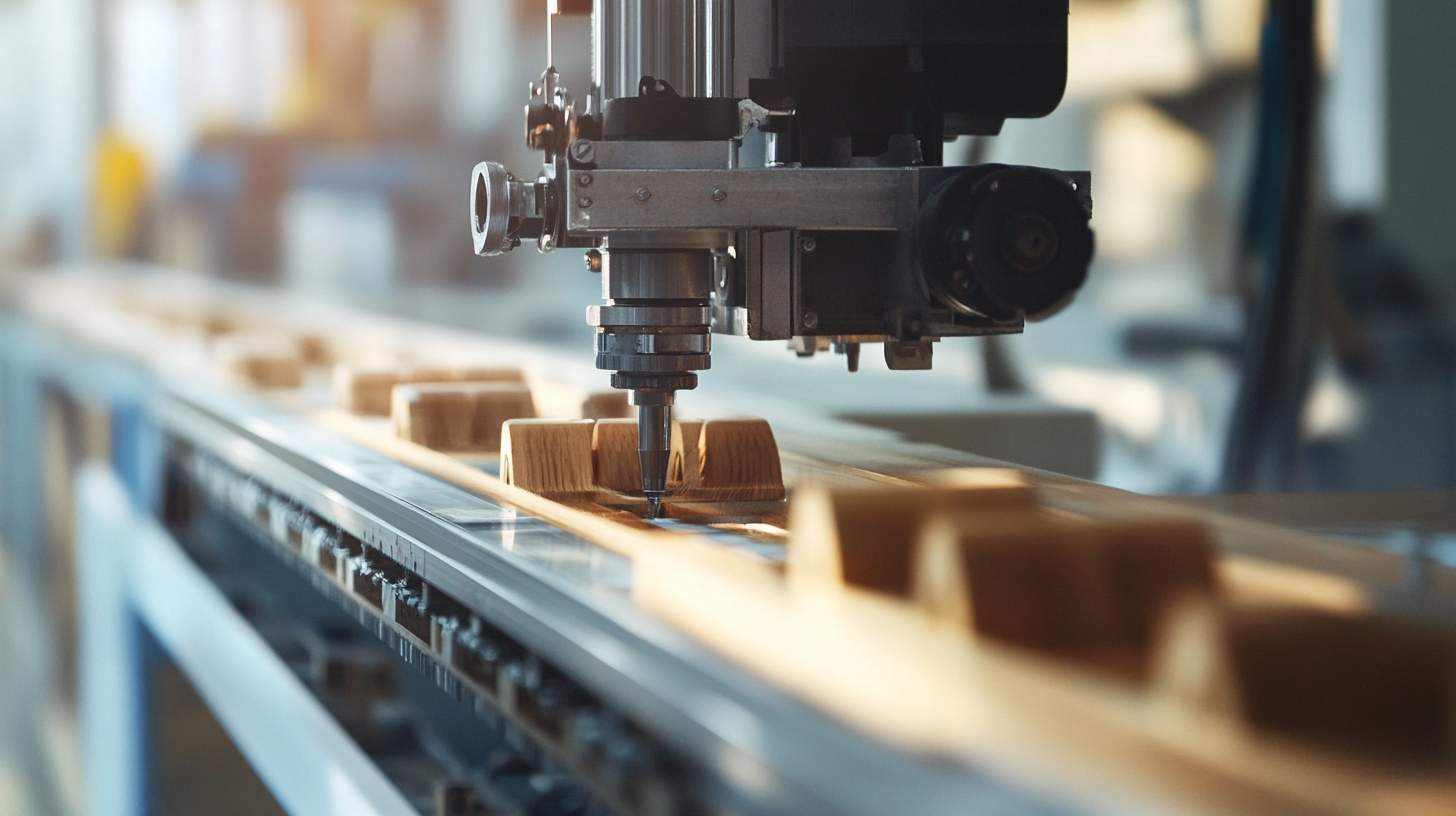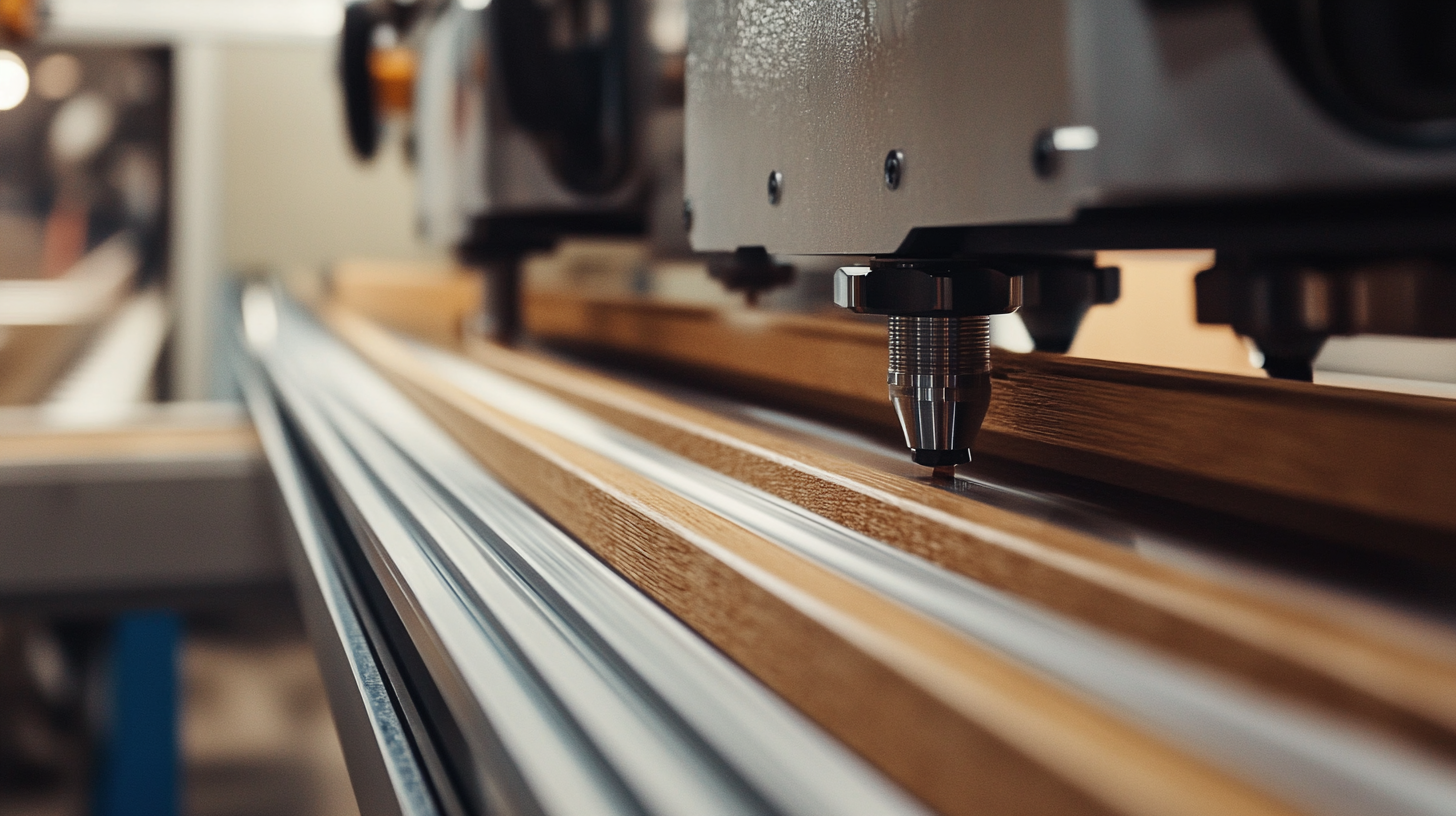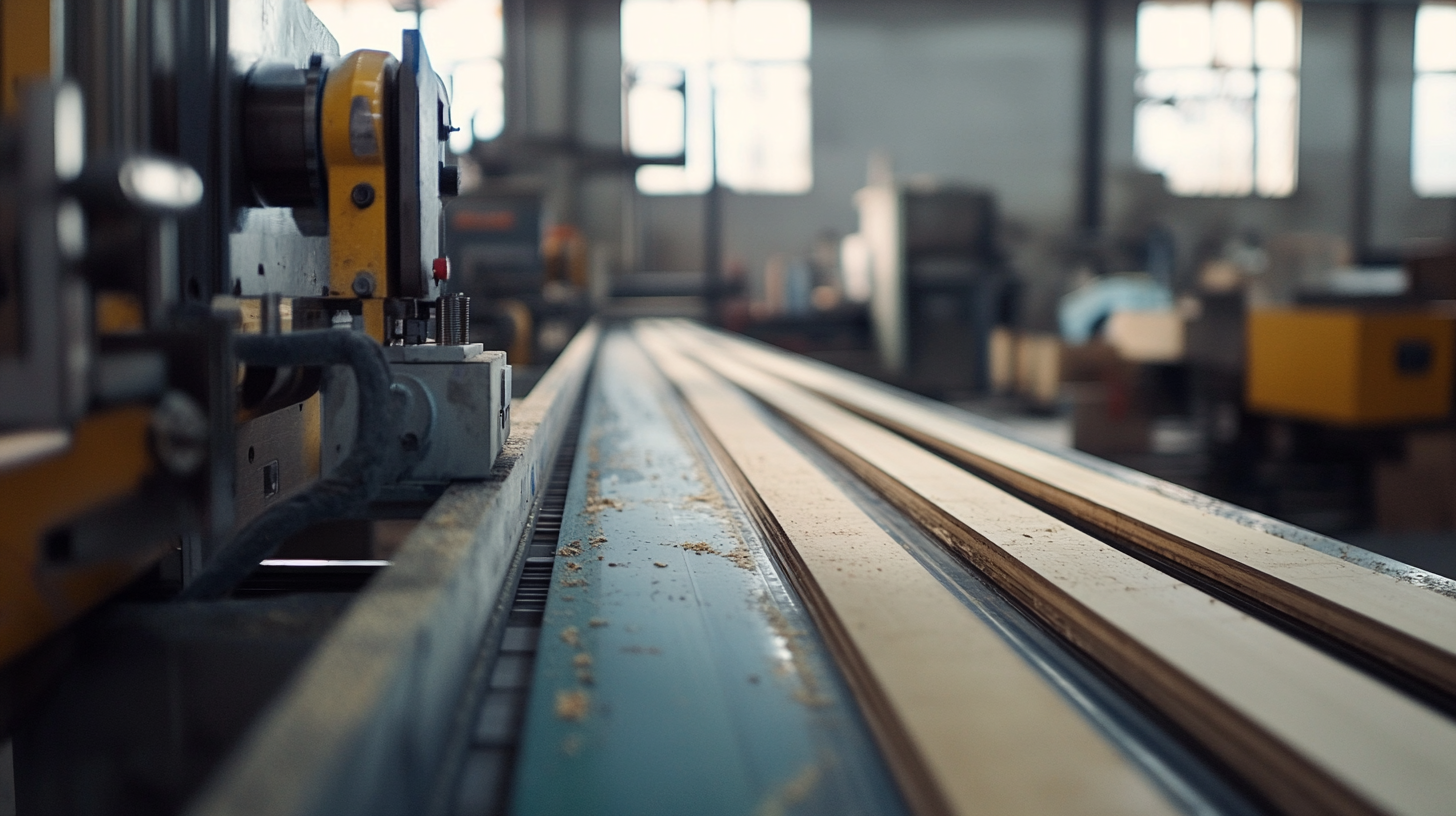The Future of Innovative Wood Window Manufacturing Equipment: Revolutionizing Production Efficiency
 As the global demand for energy-efficient and aesthetically pleasing wooden windows continues to rise, the wood window manufacturing equipment sector is set to undergo transformative changes. According to a recent industry report by ResearchAndMarkets, the global market for wood window manufacturing is projected to grow at a compound annual growth rate (CAGR) of 5.2% from 2021 to 2026, fueled by innovations in production technologies. Advanced machinery designed for wood window manufacturing equipment not only enhances production efficiency but also significantly reduces waste and energy consumption.
As the global demand for energy-efficient and aesthetically pleasing wooden windows continues to rise, the wood window manufacturing equipment sector is set to undergo transformative changes. According to a recent industry report by ResearchAndMarkets, the global market for wood window manufacturing is projected to grow at a compound annual growth rate (CAGR) of 5.2% from 2021 to 2026, fueled by innovations in production technologies. Advanced machinery designed for wood window manufacturing equipment not only enhances production efficiency but also significantly reduces waste and energy consumption.
Manufacturers are increasingly embracing automation and smart technologies to streamline operations, thereby positioning themselves in the competitive landscape characterized by companies that rank among the top exporters globally. This shift not only enhances their production capabilities but also aligns them with sustainability goals that consumers prioritize. Thus, the future of innovative wood window manufacturing equipment appears promising, as it revolutionizes the way we build and supply wooden windows to meet the growing global market demands.
Advancements in Wood Window Manufacturing Technology for Enhanced Efficiency
The advancement in wood window manufacturing technology is set to significantly enhance production efficiency across the industry. Recent reports indicate that the global wood window market is projected to reach $25 billion by 2025, driven by increasing demand for energy-efficient and sustainable building materials. One of the most notable innovations is the integration of automated machinery and robotics in the production line. These technologies not only streamline the assembly process but also reduce labor costs by up to 30%.
Moreover, advancements in materials science have led to the development of high-performance glazing options, which improve thermal insulation and meet stricter energy standards, boosting overall product appeal. Companies implementing cutting-edge software solutions for design and production management observe a 20% reduction in lead time, allowing them to respond more swiftly to market demands. These technological strides in wood window manufacturing are not just enhancing efficiency; they are also paving the way for greater sustainability and quality in construction practices.

Key Technical Specifications of Cutting-Edge Window Production Equipment
The future of wood window manufacturing is being reshaped by advancements in production equipment that emphasize efficiency and precision. Key technical specifications of cutting-edge window production equipment include automation capabilities, energy efficiency, and advanced material handling systems.
Automation allows manufacturers to streamline their processes, significantly reducing labor costs and minimizing human error. This not only boosts productivity but also enhances the quality of the finished product.
When selecting new equipment for wood window manufacturing, consider efficiency metrics such as throughput and cycle time. Using machinery that integrates with Industry 4.0 technologies can greatly improve data collection and analysis, providing insights into production bottlenecks.
Another important aspect is energy consumption during operation. Investing in energy-efficient machines not only reduces costs but also supports sustainability efforts within the industry. It's crucial to evaluate the total cost of ownership, factoring in maintenance and energy use, to ensure lasting value from your equipment investment. By focusing on these technical elements, manufacturers can position themselves at the forefront of innovation in the wood window industry.

Digital Solutions Driving the Future of Wood Window Manufacturing
As the wood window manufacturing industry evolves, digital solutions are becoming pivotal in enhancing production efficiency. According to a report by Smithers Pira, the adoption of digital technologies in manufacturing can lead to efficiency improvements of up to 30%. This transition towards a more automated and data-driven production line allows manufacturers to streamline their processes, minimize waste, and optimize resource utilization. For instance, implementing advanced manufacturing execution systems (MES) enables real-time monitoring and controlling of production operations, ensuring that any bottlenecks are swiftly addressed.
Furthermore, the integration of Industry 4.0 technologies, such as IoT and AI, is set to transform wood window manufacturing. A study by Deloitte highlights that companies leveraging IoT can expect to see operational enhancements of around 15% through predictive maintenance and enhanced supply chain management. By collecting and analyzing data from machinery and production lines, manufacturers can predict issues before they occur, leading to reduced downtimes and improved overall productivity. As digital solutions continue to evolve, they promise a stronger competitive edge for wood window manufacturers in a market that increasingly values both sustainability and efficiency.
The Future of Innovative Wood Window Manufacturing Equipment
This bar chart illustrates the impact of digital solutions on production efficiency in wood window manufacturing. The data showcases the estimated percentage increase in efficiency over the next five years as innovative technologies are adopted.
Top Industry Trends Shaping Innovative Wood Manufacturing Practices
In recent years, the wood window manufacturing industry has witnessed transformative shifts driven by technology and sustainability. As reported by the Wood Industry Association, advanced manufacturing techniques can improve production efficiency by up to 30%, showcasing a trend towards automation and precision engineering. Innovations such as CNC machining and robot-assisted assembly lines allow manufacturers to reduce waste and enhance output quality, meeting the heightened consumer demand for both performance and aesthetics in wood products.
Tips: To capitalize on these trends, manufacturers should consider investing in smart technology that integrates Internet of Things (IoT) solutions. This integration not only optimizes workflow but also provides real-time data analytics to monitor production efficiency. Additionally, embracing eco-friendly materials and processes can significantly enhance brand reputation, as consumers increasingly favor sustainable practices.
The emphasis on customization further shapes the landscape of innovative wood manufacturing. Research from the Wood Products Council indicates that personalized designs can drive market differentiation, with consumers willing to pay up to 20% more for bespoke solutions. Manufacturers are encouraged to develop modular designs that allow for consumer-driven modifications, ensuring their offerings stay relevant in a competitive market.
The Future of Innovative Wood Window Manufacturing Equipment: Revolutionizing Production Efficiency - Top Industry Trends Shaping Innovative Wood Manufacturing Practices
| Trend | Description | Impact on Efficiency | Adoption Rate (%) |
|---|---|---|---|
| Automation Integration | Utilizing robotic systems for precision and speed in assembly processes. | Increases production speed by up to 30%. | 65 |
| Smart Manufacturing | Implementation of IoT devices for real-time monitoring and data analysis. | Reduces downtime by 20% through predictive maintenance. | 50 |
| Sustainable Practices | Adopting eco-friendly materials and processes to minimize waste. | Enhances brand reputation and attracts eco-conscious consumers. | 70 |
| Advanced Materials | Using high-performance wood composites for better durability. | Improves product lifespan by up to 40%. | 55 |
| Customization Technology | Facilitating bespoke designs through specialized machinery. | Enhances customer satisfaction and reduces returns. | 60 |
Maximizing Production Efficiency: Best Practices and Strategies in Equipment Use
In the rapidly evolving landscape of wood window manufacturing, maximizing production efficiency is paramount. Companies are increasingly adopting advanced equipment and innovative technologies to streamline operations. One effective strategy is to implement regular maintenance schedules for machinery. By ensuring that all equipment is functioning optimally, manufacturers can prevent costly downtimes and maintain consistent output.
Another vital practice involves investing in training for staff to become proficient in new technologies. Adequately trained employees can operate machinery more effectively and troubleshoot issues quickly, thereby minimizing disruptions. Consider introducing cross-training programs that allow team members to gain skills in multiple areas of production. This not only enhances flexibility in operations but also fosters a collaborative work environment.
Additionally, utilizing data analytics can offer invaluable insights into production workflows. By monitoring key performance indicators, manufacturers can identify bottlenecks and areas for improvement. Implementing software that tracks these metrics in real-time allows for immediate adjustments, ensuring that production remains smooth and efficient. Adopting these best practices will position manufacturers at the forefront of the industry, ready to meet the demands of an ever-changing market.

